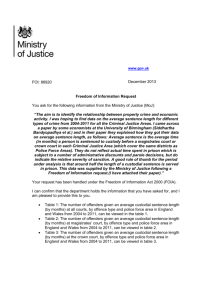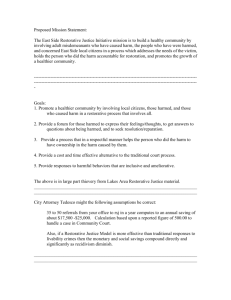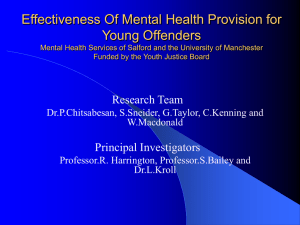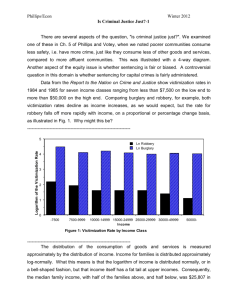Reoffending by people given non-custodial sentences for
advertisement
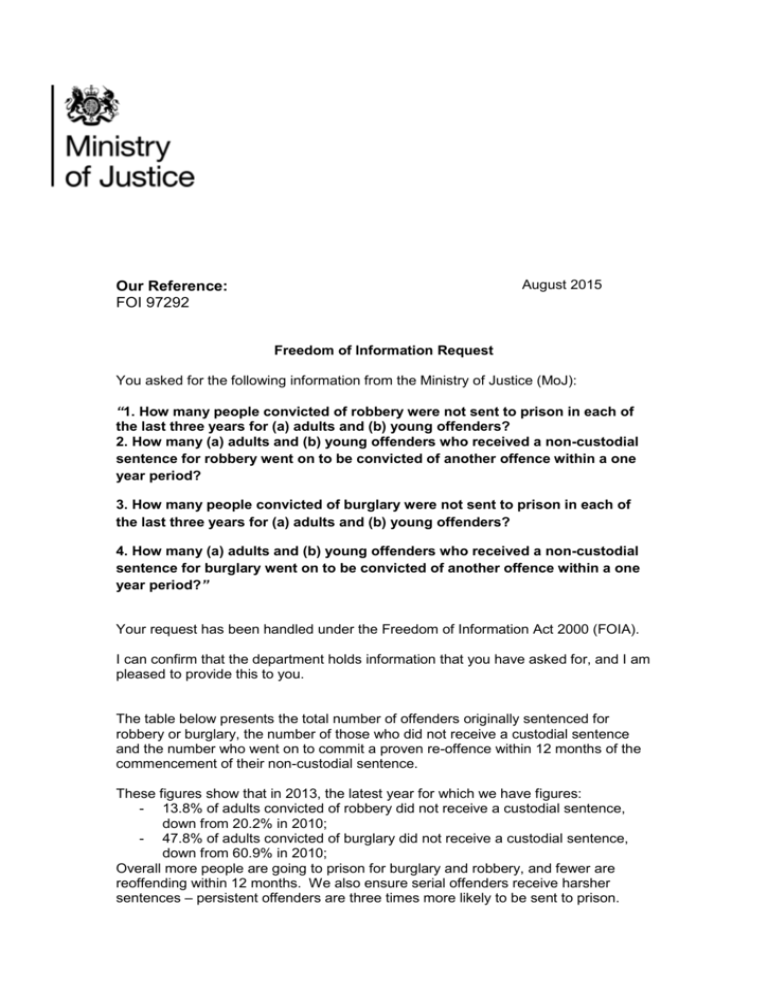
August 2015 Our Reference: FOI 97292 Freedom of Information Request You asked for the following information from the Ministry of Justice (MoJ): “1. How many people convicted of robbery were not sent to prison in each of the last three years for (a) adults and (b) young offenders? 2. How many (a) adults and (b) young offenders who received a non-custodial sentence for robbery went on to be convicted of another offence within a one year period? 3. How many people convicted of burglary were not sent to prison in each of the last three years for (a) adults and (b) young offenders? 4. How many (a) adults and (b) young offenders who received a non-custodial sentence for burglary went on to be convicted of another offence within a one year period?” Your request has been handled under the Freedom of Information Act 2000 (FOIA). I can confirm that the department holds information that you have asked for, and I am pleased to provide this to you. The table below presents the total number of offenders originally sentenced for robbery or burglary, the number of those who did not receive a custodial sentence and the number who went on to commit a proven re-offence within 12 months of the commencement of their non-custodial sentence. These figures show that in 2013, the latest year for which we have figures: - 13.8% of adults convicted of robbery did not receive a custodial sentence, down from 20.2% in 2010; - 47.8% of adults convicted of burglary did not receive a custodial sentence, down from 60.9% in 2010; Overall more people are going to prison for burglary and robbery, and fewer are reoffending within 12 months. We also ensure serial offenders receive harsher sentences – persistent offenders are three times more likely to be sent to prison. Table 1: Adult and juvenile proven re-offending data, by index offence of robbery and burglary, 12 months ending September 2010 to 12 months ending September 2013 12 months 12 months 12 months 12 months ending ending ending ending September September September September 2010 2011 2012 2013 Index offence Adults Robbery Number of offenders in cohort 3,272 3,592 3,983 4,132 20.2 19.4 16.7 13.8 Did not receive custody 661 697 666 572 Re-offended within 12 months 170 192 162 158 13,001 14,334 14,475 13,635 60.9 58.8 51.5 47.8 Did not receive custody 7,913 8,425 7,461 6,511 Re-offended within 12 months 3,209 3,465 2,963 2,578 2,442 2,566 2,421 1,781 84.2 87.6 83.3 83.3 2,056 2,249 2,017 1,483 811 845 726 567 4,991 4,307 3,651 2,670 % not receiving a custodial sentence Burglary Number of offenders in cohort % not receiving a custodial sentence Juveniles Robbery Number of offenders in cohort % not receiving a custodial sentence Did not receive custody Re-offended within 12 months Burglary Number of offenders in cohort % not receiving a custodial sentence Did not receive custody Re-offended within 12 months 93.3 92.0 91.0 91.8 4,656 2,014 3,962 1,720 3,324 1,337 2,451 1,079 A proven re-offence is defined as any offence committed in a 12 month follow-up period which results in a court conviction or caution. Following this one year period, a further six month waiting period is allowed for cases to progress through the courts. The statistics presented are a further breakdown of figures published in Tables 5a and 5b of the “Proven Re-offending Statistics Quarterly Bulletin, October 2012 to September 2013”, which can be found in the Excel document entitled “Proven Reoffending Tables, October 2012 to September 2013” at the following link: https://www.gov.uk/government/statistics/proven-reoffending-statistics-quarterlyoctober-2012-to-september-2013 Please note that the data required for measuring proven re-offending are mainly based on an extract from the Police National Computer (PNC), and excludes offenders that cannot be matched to the PNC. Therefore, the figures provided do not represent all proven offenders. An explanation of the proven re-offending measure and definitions of the main terms used in the bulletin can be found at the same link in the “Definitions and Measurement” document. The Government legislated in the Criminal Justice and Courts Act 2015 to introduce further statutory restrictions on the use of cautions for serious and repeat offenders. The provisions came into force in April 2015. You can also find more information by reading the full text of the Act (available at http://www.legislation.gov.uk/ukpga/2000/36/contents). You have the right to appeal our decision if you think it is incorrect. Details can be found in the ‘How to Appeal’ section attached at the end of this letter. Disclosure Log You can also view information that the Ministry of Justice has disclosed in response to previous Freedom of Information requests. Responses are anonymised and published on our on-line disclosure log which can be found on the MoJ website: https://www.gov.uk/government/organisations/ministry-of-justice/series/freedom-ofinformation-disclosure-log
